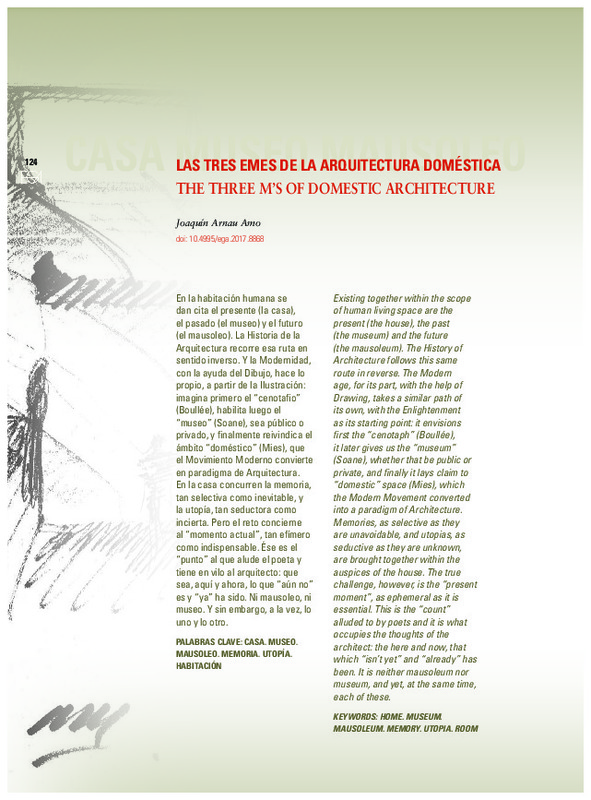JavaScript is disabled for your browser. Some features of this site may not work without it.
Buscar en RiuNet
Listar
Mi cuenta
Estadísticas
Ayuda RiuNet
Admin. UPV
Las tres emes de la arquitectura doméstica
Mostrar el registro completo del ítem
Arnau Amo, J. (2017). Las tres emes de la arquitectura doméstica. EGA. Revista de Expresión Gráfica Arquitectónica. 22(31):124-131. https://doi.org/10.4995/ega.2017.8868
Por favor, use este identificador para citar o enlazar este ítem: http://hdl.handle.net/10251/91407
Ficheros en el ítem
Metadatos del ítem
| Título: | Las tres emes de la arquitectura doméstica | |
| Otro titulo: |
|
|
| Autor: | Arnau Amo, Joaquín | |
| Entidad UPV: |
|
|
| Fecha difusión: |
|
|
| Resumen: |
[EN] Existing together within the scope of human living space are the present (the house), the past (the museum) and the future (the mausoleum). The History of Architecture follows this same route in reverse. The Modern ...[+]
[ES] En la habitación humana se dan cita el presente (la casa), el pasado (el museo) y el futuro (el mausoleo). La Historia de la Arquitectura recorre esa ruta en sentido inverso. Y la Modernidad, con la ayuda del Dibujo, ...[+]
|
|
| Palabras clave: |
|
|
| Derechos de uso: | Reserva de todos los derechos | |
| Fuente: |
|
|
| DOI: |
|
|
| Editorial: |
|
|
| Versión del editor: | https://doi.org/10.4995/ega.2017.8868 | |
| Tipo: |
|








